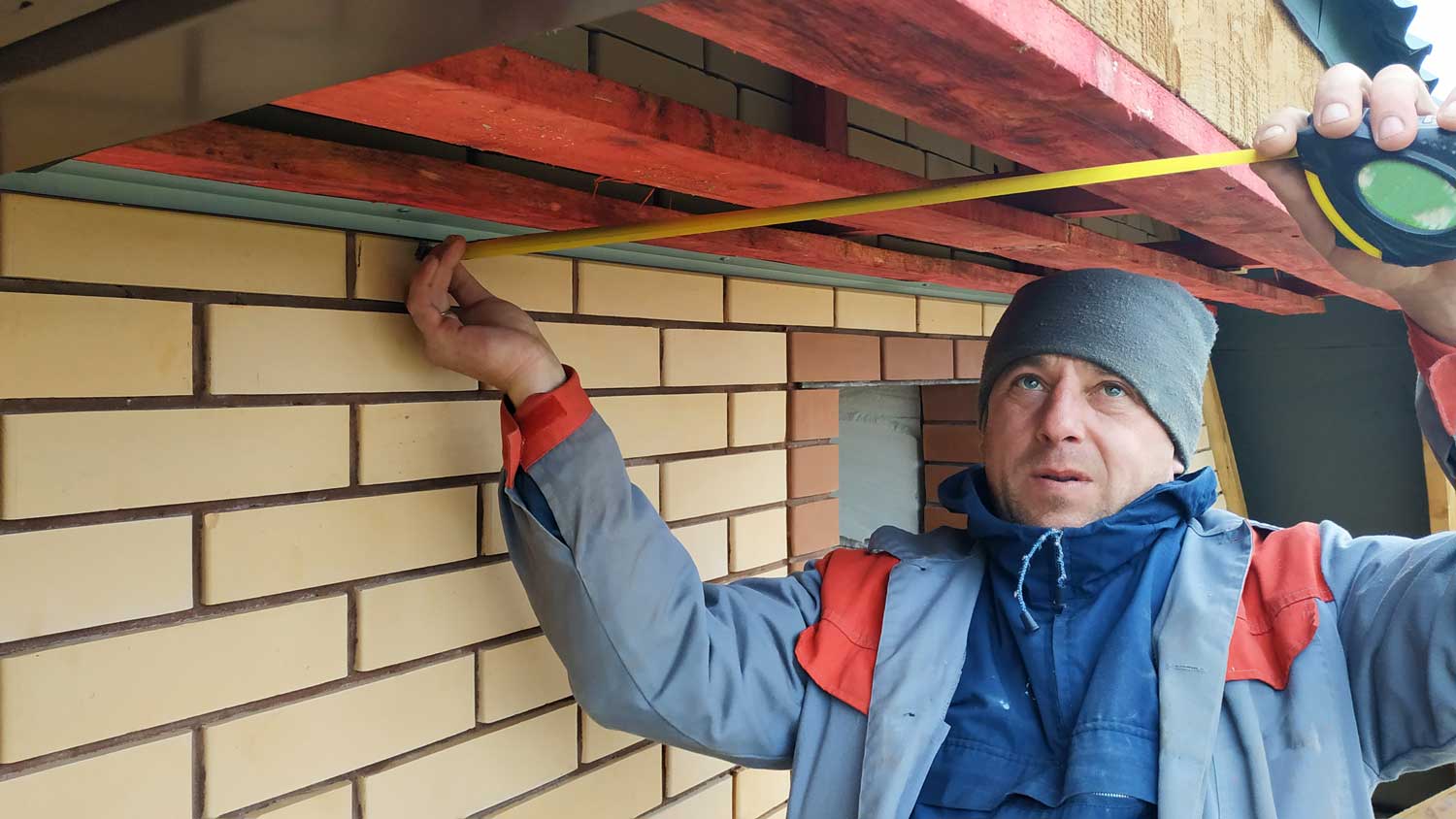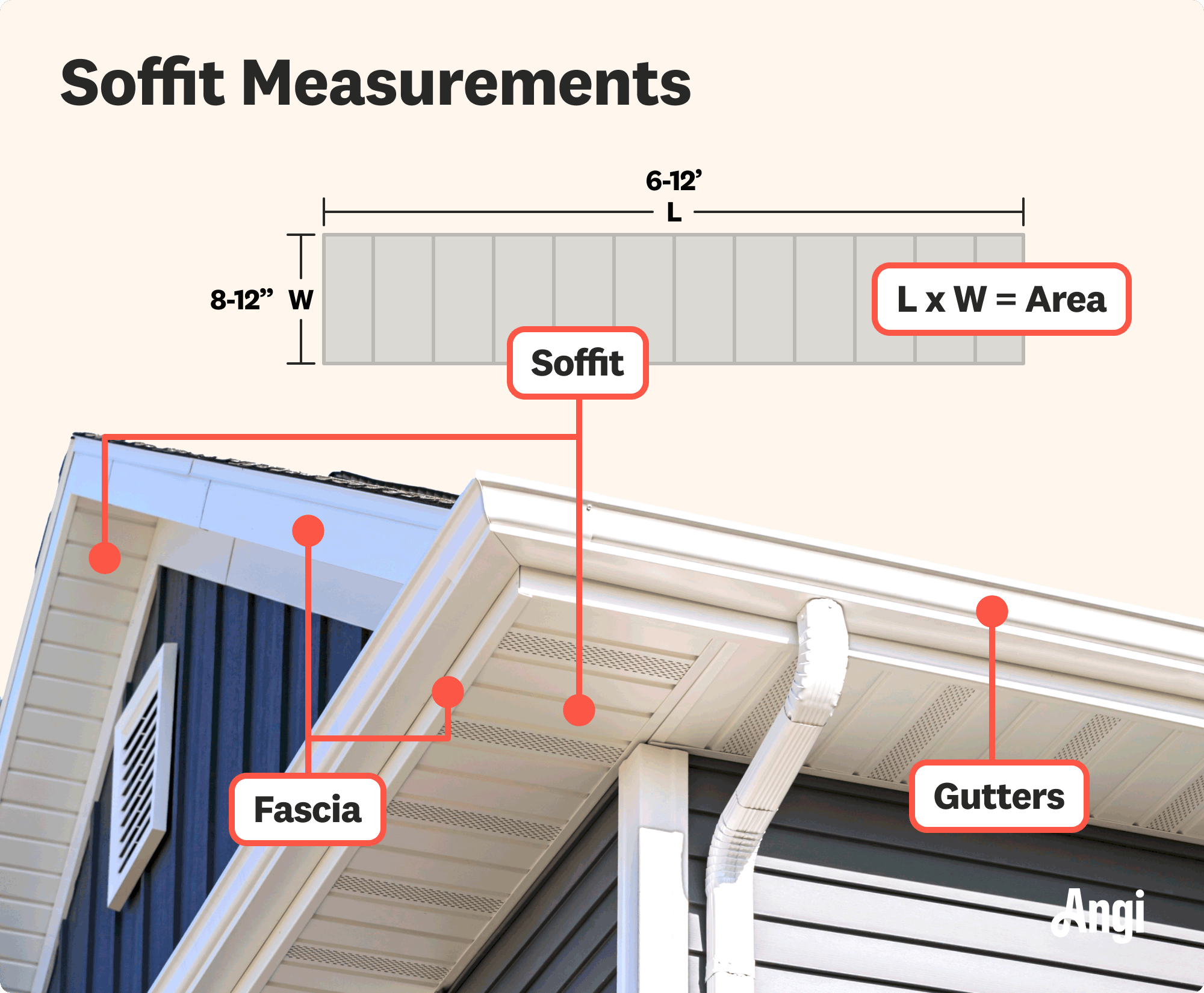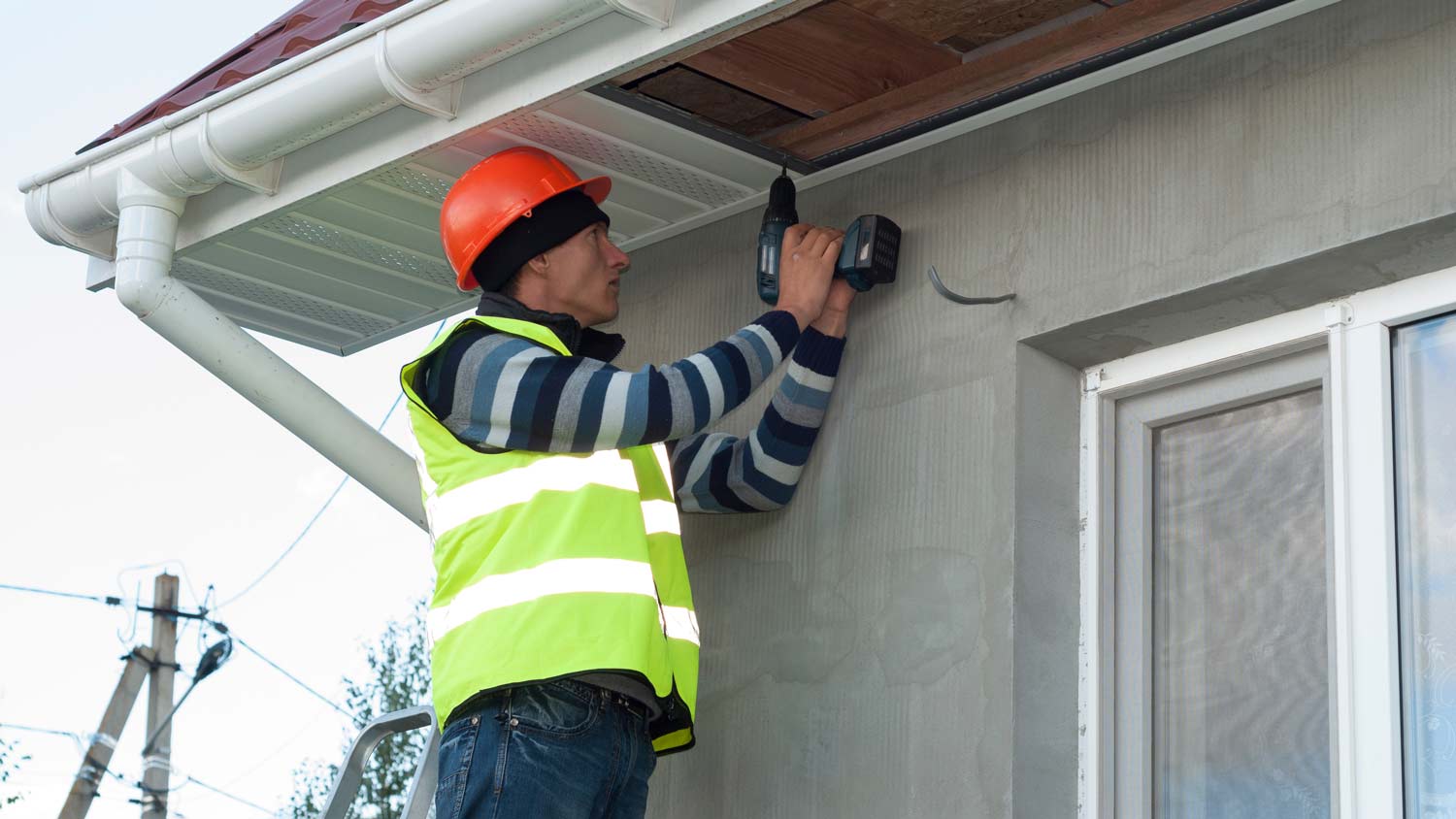
Dealing with a visibly damaged roof or leak? Learn about roof repair costs in Columbus to see how much you’ll need to budget for a permanent solution.
Calculating how much you need should be a breeze


Measuring soffits is easy, but accessing them isn’t (due to height).
Most homes will have standardized soffit measurements.
Installing soffits should be left to a pro.
Soffits play a key role in keeping your house cool and preventing moisture buildup in your attic. Wondering, “How much soffit do I need?” Luckily, calculating how much soffit your project demands isn’t hard, but access might be tricky as soffits are along your roofline. That being said, use this soffit calculator to figure out exactly how much material you need.
Soffit installation is more of a science than an art, which makes calculating how much you need a little more straightforward. Measure length multiplied by width (depth) to arrive at the required amount of soffit. From there, you simply purchase and install that exact amount. Remember that soffit requirements are based on length, so even if your eaves are sloped, you measure flat against the soffit board.
| Project | Soffit Required |
|---|---|
| 250-ft long eaves, 8 in. wide soffit | 250 linear feet of 8-inch soffit |
| 120-ft long eaves, 12 in. wide soffit | 120 linear feet of 12-inch soffit |
| 8-ft sloped section (45 degrees), 8 in. wide | 8 linear feet of 8-inch soffit |

Calculating the required amount of soffit is simple, as you’ll only need two numbers: the length and depth of your roof’s eaves. While you can use the measuring features on your smartphone, it’s more accurate to use a measuring tape. If you’re not comfortable on ladders, call a pro, as soffits are usually fairly high up (where the roof meets the exterior wall).
Use the formula below to calculate soffit requirements:
Soffit amount required = Length (feet) x depth (inches)
If your length measurements do not correspond exactly to available soffit lengths, you’ll either need to purchase smaller pieces to fit the length or cut the soffit to fit (a pro should do this). Make sure you account for waste when cutting.
Soffits can be purchased in standardized widths and are often done so, as custom soffit work isn’t overly common. Most soffits are between 8 inches and 12 inches wide, with common lengths measuring 6 feet, 8 feet, and 12 feet.


Measuring for soffits isn’t the most complicated task, but who do you call when you want a project quote or to begin installation? Roof repair professionals near you will be able to assist or direct any soffit-related work you plan on doing to your home. We recommend them over general contractors as their expertise with roof issues and access to soffit materials are second-to-none.
Homeowners who need to replace the soffit around their entire home can expect to spend $2,550 on average, with a range between $1,625 and $3,500 (when installing vinyl). Metal and wood soffits are considerably more expensive and can cost between $2 and $25 per linear foot, whereas vinyl tops out around $12.
The majority of soffit installation cost is from the installation itself—pros commonly charge between $40 and $120 per hour to perform this work. While this may seem high, remember the heights involved. Any work involving awkward positions with an element of danger will carry a premium.
From average costs to expert advice, get all the answers you need to get your job done.

Dealing with a visibly damaged roof or leak? Learn about roof repair costs in Columbus to see how much you’ll need to budget for a permanent solution.

Learn about roof replacement costs in Columbus and what factors are at play to budget accurately and make sure you’re getting a fair price.

A metal roof can defend your home against Ohio’s varying weather conditions. Learn how much a metal roof costs in Columbus, OH.

Understanding the available types of roof trusses helps you create the desired shape and support for your roof. Learn more about the different options.

Are you trying to pick a soffit and fascia material for your roof? Here are 10 options for the right finishing touch on your house.

Your home's new tin roof cost will depend on several factors, including its size, materials, style chosen, complexity, and added options.